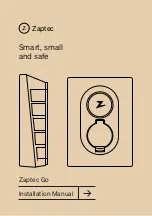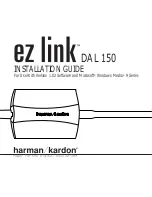
34
GREEN MOTION BUILDING INSTALLATION MANUAL
MN191028EN January 2022 www.eaton.com
00 Title
8.2 Load balancing
8.2.1 Load balancing parameters
The relevant parameters for understanding load balancing by the Eaton load balancing algorithm are described in the
table below.
8.2.2 Static load balancing
For static load balancing the Eaton load balancing algorithm uses the parameter MAXIMUM AVAILABLE CURRENT
FOR EV CHARGING as the total available current for EV chargers. The algorithm then divides this current over the EV
chargers, considering:
•
Number of cars connected
•
Maximum current capacity per car
•
Energy delivered per car
•
Charging stations’ priorities.
The parameter PRIORITY OF EV CHARGER determines the importance the Eaton load balancing algorithm attaches to
each EV charger. This parameter can differ from one EV charger to the next.
Static load balancing:
The maximum available current is divided over the EV chargers according to the Eaton load
balancing algorithm. The maximum available current is a FIXED VALUE depending on the electrical installation.
Dynamic load balancing:
The maximum available current is divided over the EV chargers according to the Eaton
load balancing algorithm. The maximum available current is a DYNAMIC VALUE updated according to the building
consumption monitored in real-time with an energy meter.
Phase balancing:
Limits current differences between phases. This is needed for network stability.
Table 10 . Load balancing parameters
Parameter
Description
Maximum station
capacity [A]
The maximum current [A] the local electrical infrastructure can supply to the EV chargers.
This value ensures that the combined load of the EV chargers never exceeds the maximum current dedicated to the
EV charging electrical infrastructure.
This value is fixed and is used by the algorithm for both static and dynamic load balancing.
Maximum current
capacity of the building
The maximum current [A] capacity of the local electrical infrastructure including, but not limited to, the EV charging
electrical infrastructure.
This value is fixed and is used by the algorithm for dynamic load balancing.
Charger privilege
It is possible to assign a priority from 1 to 10 to a Green Motion Building EV charger. The EV charger with a priority level at
10 will have a high priority and a priority level at 1 will have a low priority.
If all the levels are set at the same value, there will be no priority differences during the charge.
If one EV charger has a higher priority level that the other EV chargers, it will charge faster.
Maximum available current
= Maximum current
- Maximum other loads
- Margin
static
building
building
Maximum available current
= Maximum current
- other loads
- Margin
dynamic
building
monitored by energy meter















































